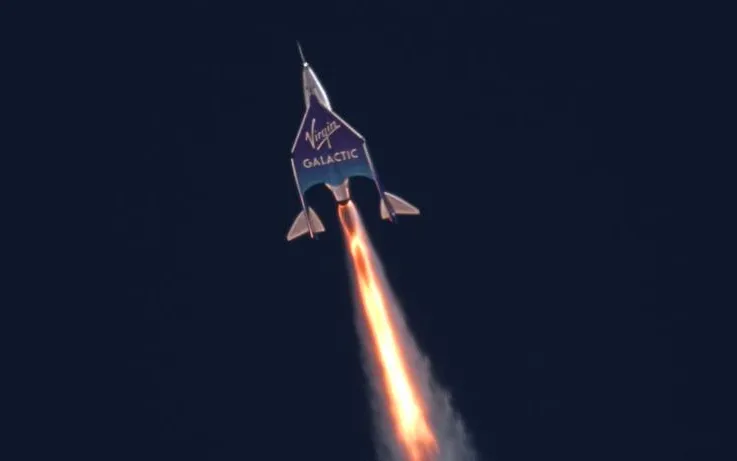Virgin Galactic Completes Historic Commercial Space Voyage
Virgin Galactic has successfully conducted its inaugural commercial flight after more than ten years of preparation. The VSS Unity spacecraft, carried by the VMS Eve mothership, ascended to an altitude of approximately 52 miles, marking the boundary of space. After a flight duration of nearly 15 minutes, the spacecraft safely touched down at the Spaceport America base in Truth or Consequences, New Mexico, concluding the Galactic 01 research mission.
The company’s first customer was the Italian government, whose goal was to conduct microgravity research. On the plane were Air Force Colonel Walter Villadei, Air Force Lieutenant and Flight Surgeon Colonel Angelo Landolfi, and Research Council member Pantaleone Carlucci, who was a flight engineer and payload expert. Unity was piloted by retired US Air Force Lt. Col. Michael Masucci and Nicola Pecile, and included Virgin Galactic trainer Colin Bennett.
WATCH LIVE: Join us for the launch our first commercial spaceflight and scientific research mission, #Galactic01 crewed by @ItalianAirForce & @CNRSocial_. https://t.co/rptoP4PeEk
— Virgin Galactic (@virgingalactic) June 29, 2023
Prior to the commercial flight, Virgin Galactic had completed a total of five crewed spaceflights, the last in late May with four crew members. However, the company has gone through a lot of pain to get to this point.
After several successful tests of its SpaceShipTwo spacecraft aboard the mothership WhiteKnightTwo in 2013, Virgin Galactic’s VSS Enterprise crashed in 2014, killing the co-pilot and seriously injuring the pilot. Flight testing continued with the VSS Unity glide test in 2016, and the craft finally reached space in 2018.
The company’s first fully manned space flight took place in 2021, when Unity hit an altitude of 53.4 miles with founder Richard Branson. However, the commercial service was delayed several times for various reasons, most recently due to problems updating the mother ship’s VMS Eve.
From a financial point of view, the launch was crucial for Virgin Galactic. With no paying customers so far, the company has lost money for years, including more than $500 million in 2022 alone. It is advertising seats for $450,000 per ticket and previously set a goal of 1,000 bookings before its first commercial launch.
Virgin Galactic’s main competitor in the suborbital tourism space race is Blue Origin, which uses a conventional rocket instead of an aircraft mothership. Blue Origin CEO (and Amazon founder) Jeff Bezos has said that Virgin Galactic cannot offer a true spaceflight experience compared to Blue Origin’s system, which crosses the 62-mile-high Kármán line, often used to mark the beginning of space. Others consider 50 miles to be the threshold.
Blue Origin has had its own problems. Last year, one of its New Shepard rockets suffered a booster failure about a minute after liftoff, forcing the company to use an escape system for the unmanned capsule, which worked as planned.
Another competitor, SpaceX, offers a completely different experience – its Falcon 1 rocket and Crew Dragon capsule take customers into real orbit. SpaceX has even flown a private crew to the International Space Station on a 10-day trip, reportedly for a fee of $55 million.




